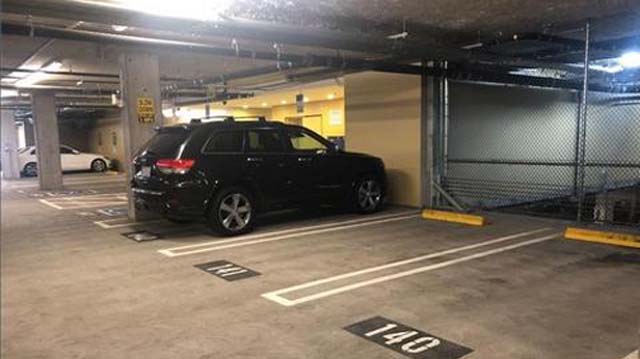
Bamboo has a higher specific compressive strength than wood, brick, or concrete and a specific tensile strength that rivals steel. PHOTO: pinterest.com
With growing concerns over the rising cost of building materials and its implications in bridging the housing deficits in Nigeria, emerging trends have shown promises of bamboo tree’s potentiality to fuel a future infrastructure boom in the country.
Development experts and stakeholders in the built environment said, the bamboo tree, which is not in short supply in Nigeria could provide the winning streaks to the nation’s drive for affordable housing as well as mitigating the housing and infrastructural deficits.
President, Association of Consulting Architects of Nigeria, Mr. Kitoyi Ibare- Akinsan, said Bamboo potential is not in doubt being a natural composite material with a high strength-to-weight ratio useful for structures.
According to him, Bamboo has a higher specific compressive strength than wood, brick, or concrete and a specific tensile strength that rivals steel.
He informed that several institutes, businesses, and universities are researching the use of bamboo as an ecological construction material. In the USA and France, it is possible to get houses made entirely of bamboo, which are earthquake and cyclone-resistant and internationally certified. Three ISO standards are given for bamboo as a construction material.
“Bamboo was used for the structural members of the India Pavillion at Expo 2010 in Shanghai.
Bamboo is used for scaffolding for multi-storey construction of a limited height.
Bamboo grows and is available in Nigeria.
“With all these qualities, it is quite possible to use bamboo for some of infrastructural works with proper professional guidance”, he added.
According to the Chief Executive Officer of Malaysian infrastructure services firm Edotco, Suresh Sidhu, bamboo boasts a low carbon footprint as it produces oxygen and captures carbon dioxide during cultivation, while sourcing for steel causes scarring to landscapes from the mining of natural resources.
He explained that the plant takes just six months to regenerate and can be re-harvested every three years without any environmental damage.
Although, bamboo’s susceptibility to termites, mold attacks and other adverse climate conditions have been identified as its potential drawbacks in construction but experts said eco-friendly treatment processes such as borax coating can help.
The company, Sidhu said, intends to roll out more bamboo structures as proof of concepts in other parts of Dhaka this year and will gradually expand to other markets where the firm is present, such as Myanmar and Sri Lanka.
“We hope this (tower) will inspire infrastructure companies to focus on renewable materials,” said he added.
For the Honorary General Secretary of the Nigerian Institute of Architects (NIA) , Mrs Abimbola Ajayi, bamboo holds a great potential for Nigeria’s march to sustainable development.
Bamboo solution, she said, should be encouraged for its affordable and extensive availability across the country as well as its steel like nature that does not easily decay.
Ajayi informed that bamboo has long been a go-to building material for construction players drawn to its tensile strength, light-weight, low cost and mass quantities.
She stressed that a research has recently been conducted on its use for housing solution in flooring, windows and furniture and will be presented in South Korea in November as Nigeria’s entry from the competition on sustainable development carried out by architectural students from Ahmadu Bello University , Zaria.
She however said the challenge for the use of bamboo as an alternative could be the culture of sigmatisation that might follow those subscribing to its use.
Last month, Bangladesh’s capital city became home to the world’s first cell tower constructed entirely out of bamboo — proof that emerging Asia can simultaneously tackle two of its most pressing concerns: infrastructure investment and renewable resources.
Developed by Malaysian infrastructure services firm Edotco and the Bangladesh University of Engineering, the tower took just 12 days to build, versus 28 days for a traditional steel structure, and consumed less energy to manufacture.
In 2007, Mainland China built the world’s first truck-safe bamboo road bridge, which allows a maximum load of 90 tons.
While bamboo design has taken off globally in 2008, Mexico City’s Nomadic Museum was the world’s largest bamboo structure , it’s especially relevant for developing Asia.
A volunteer prepares bamboo poles while building makeshift school buildings in Champi, Kathmandu Valley, Nepal, on May 29, 2015.
The region will have to spend $26 trillion on public works by 2030 to maintain economic growth, according to a recent Asian Development Bank report, and industry players believe the use of sustainable building materials for public projects is a practical long-term solution to the region’s infrastructure deficit.
Going green can create a win-win situation for economic development as it benefits industrialization, expansion of trade and productivity, the United Nations told a gathering of Asia’s least developed nations last month. And as Asian heavyweights such as India and China promise to reduce their carbon emissions over the next 15 years as part of the Paris Agreement, renewables will be key.
According to Neelam Manjunath, a principal architect at Bangalore-based Manasaram, “Not only is bamboo one of the world’s fastest growing plants, with some species growing up to 1.2 meters in a day, it is also well-suited for urban disasters.
“Bamboo’s use in infrastructure projects will reduce carbon emissions considerably without compromising on development,” she added.
Manjunath’s firm has also incorporated the crop for various public infrastructure projects throughout India, including a bus shelter and metro station in Bangalore as well as a bridge and public toilets in New Delhi.
In Bali, Indonesia, two expatriates have taken bamboo design to a new level: Among the island’s rice paddies is a school campus built out of fifty plus bamboo structures.
Co-founded by John and Cynthia Hardy, the 23-acre facility known as The Green School, is one of Asia’s largest bamboo structures and its curriculum focuses on holistic learning, particularly entrepreneurship and green living.
The Green School’s design can be imitated throughout the globe, Hardy stressed in a 2010 TED talk. “Is this doable in your community? We believe it is. Green School is a model we built for the world.”
In Nigeria, Ogun State government has in appreciation of its potentiality to the nation’s rapid socio-economic development recently called for an increase planting and exploitation of bamboo for building, furniture and exportation purposes,
Speaking shortly after hosting the delegate of World Bamboo Organisation (WBO) the state commissioner for forestry, Kolawole Lawal pointed out that Bamboo was gaining more acceptability all over the world coupled with the fact that the product is already going to extinction.
According to him, Ogun State as one of the few states naturally endowed with bamboo trees would ensure proper exploration and cultivation towards generating more employment opportunities for wealth creation and the growth of the economy.
‘’Bamboo is becoming an emerging market; the demand for bamboo has sharply increased with limited supply.
“Ogun State is one of the few naturally blessed with bamboo, we can supply the world if properly managed and even create more jobs for our youth’’, he said.
[ad_2]
link




